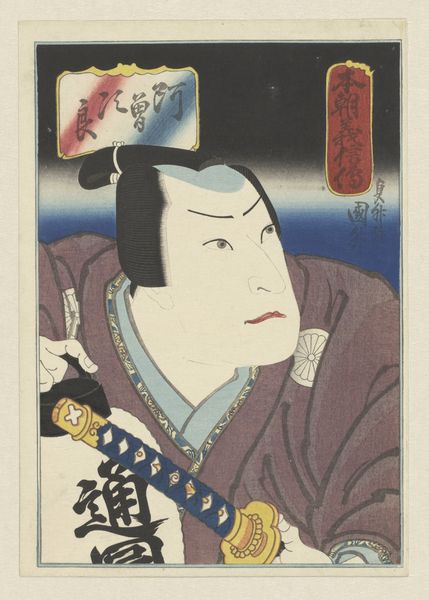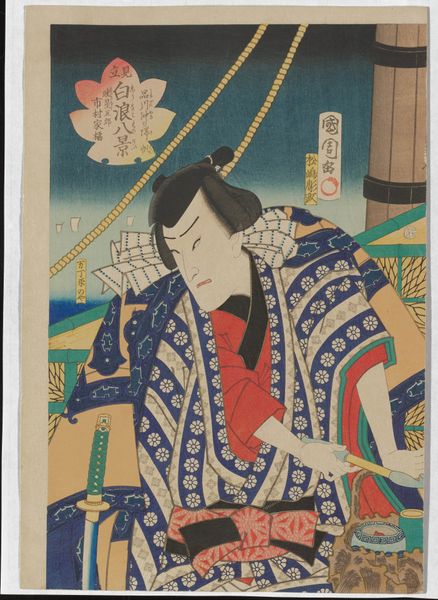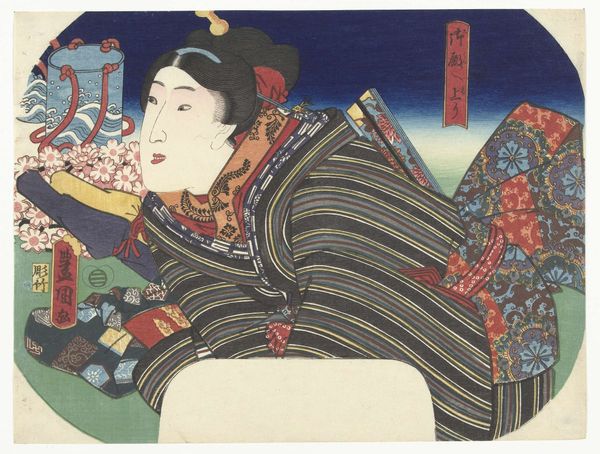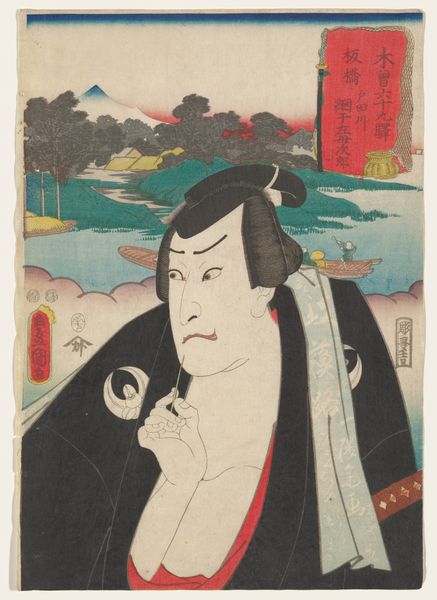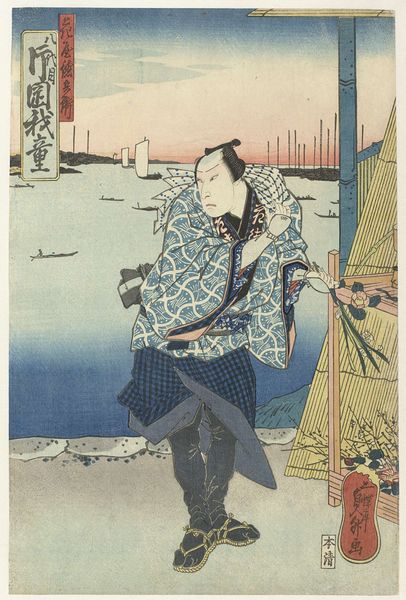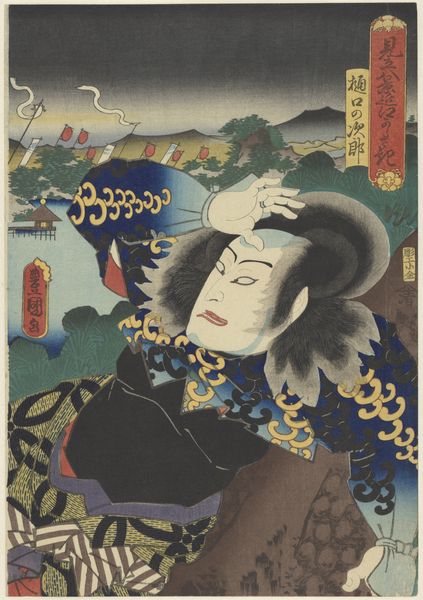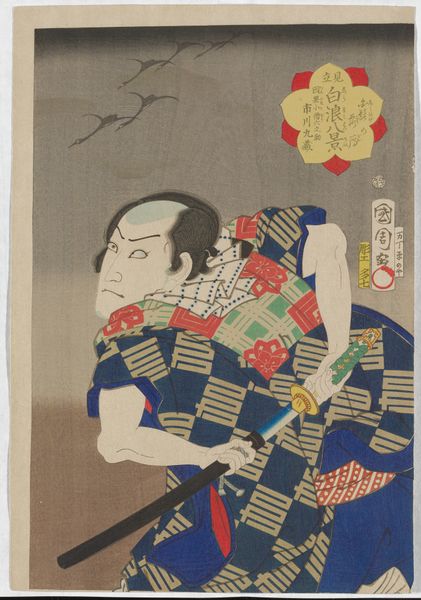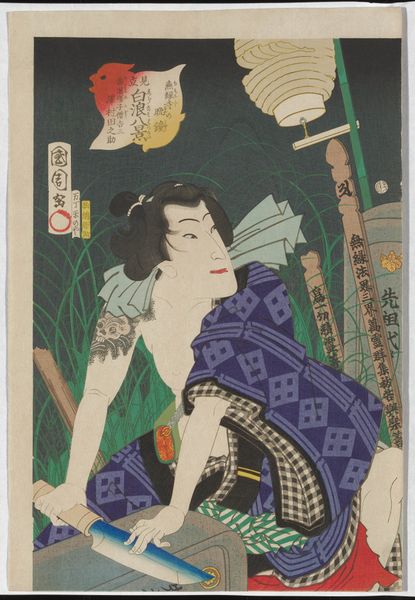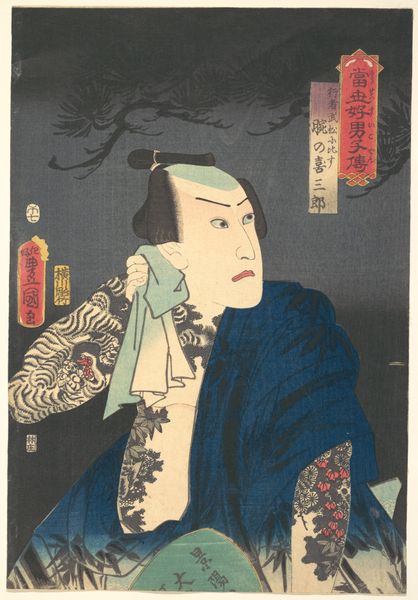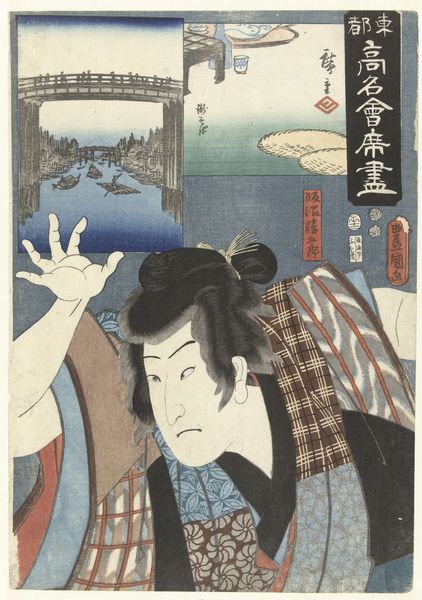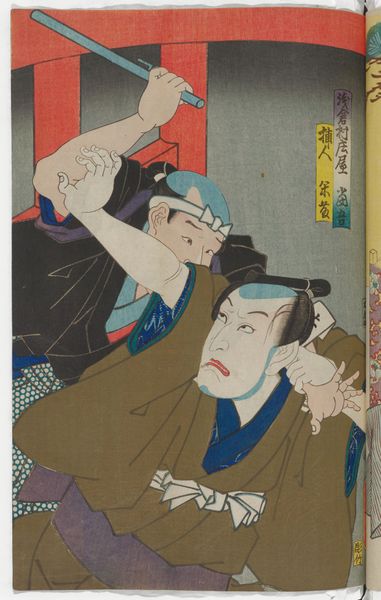
print, woodblock-print
#
portrait
# print
#
asian-art
#
river
#
ukiyo-e
#
figuration
#
woodblock-print
#
watercolour illustration
Dimensions: height 218 mm, width 296 mm
Copyright: Rijks Museum: Open Domain
Editor: This woodblock print, "Samurai by a River" by Utagawa Kunisada, dates back to around 1850. The composition feels very layered, almost theatrical. What catches your eye when you look at this work? Curator: The materiality of this Ukiyo-e print, especially its production process, immediately strikes me. Consider the woodblock itself; each color requires a separate block meticulously carved by skilled artisans. This highlights the collaborative nature of printmaking during that era, and it’s important to remember that we have to look beyond the 'artist' Kunisada when considering this print's social context. The work has no 'aura' since it is intended to be reproduced on a large scale for widespread distribution and consumption. Editor: That's interesting. I hadn't thought about the labor involved beyond the artist’s design. Does the choice of a samurai subject influence how you interpret the print's materiality? Curator: Absolutely. The samurai class, while holding immense power, was also subject to strict codes governing dress and possessions. Kunisada's print makes it clear the attention paid to accurately portraying those details in their attire and surroundings. It encourages a deep engagement with consumer culture of the Edo period and an understanding of who was the artwork directed to, in particular merchants. They supported art productions but were in an inferior status compared to samurai. Editor: So you're saying that the print's material presence speaks volumes about class, consumption, and the socio-economic landscape of 19th-century Japan. Curator: Precisely! This challenges our notions about "high" and "low" art by examining everyday experience of consuming. It also questions who the image truly served - was it solely a portrait of a samurai, or a reflection of broader cultural desires? Editor: I see. I had focused mainly on the subject, but now understand better its making and its complex cultural significance! Curator: That’s a great takeaway! The power of art often resides not just in its aesthetic value, but also in its tangible existence, its production, and the context it inhabits.
Comments
No comments
Be the first to comment and join the conversation on the ultimate creative platform.
